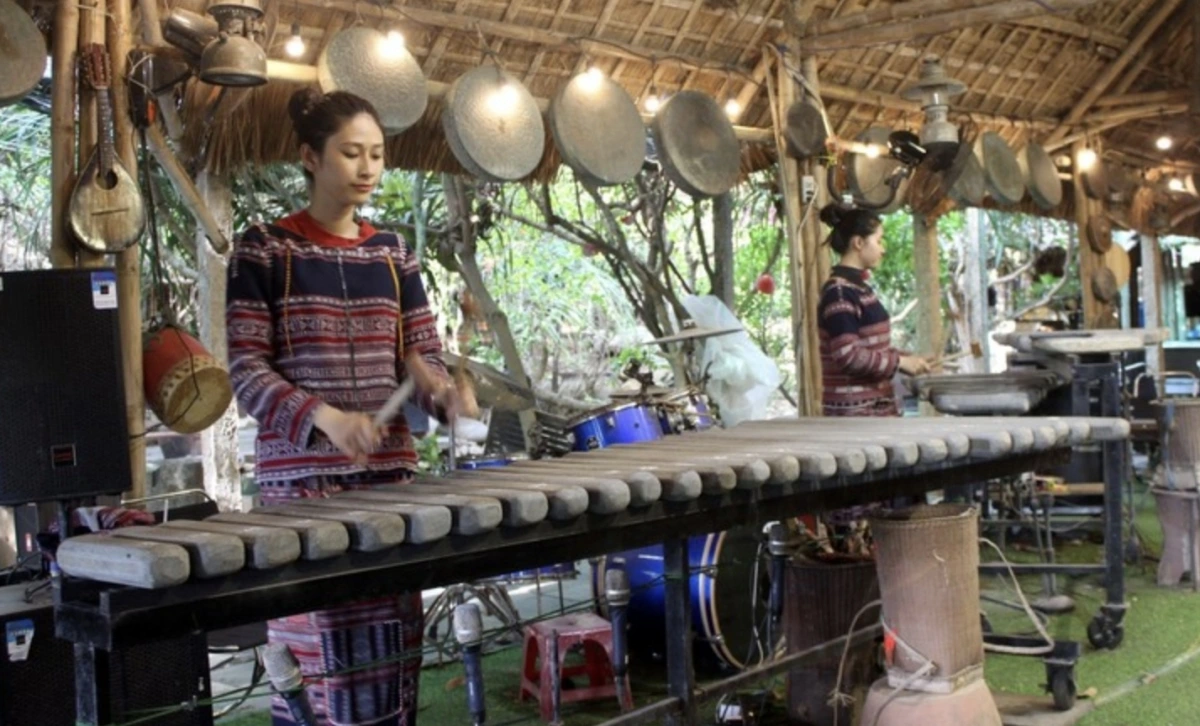Natural sounds of the lithophone in Vietnam’s easternmost region
Cập nhật: 18/08/2025
VOV.VN - People in Tuy An Dong commune, Dak Lak province have managed to modify the traditional lithophones made from slabs of natural stone with the modified instrument turning the commune a popular tourist destination.

Strolling through the Ganh Da Dia (the Cliff of Stone Plates) special national relic site in Tuy An Dong commune, visitors can hear the distant sound of a stone percussion instrument. Artists perform lithophone renditions of both traditional tunes and popular contemporary hits.
Nguyen Van Son, a tourist from Hanoi said “I heard the sound from a distance and told my child that it was the sound of a lithophone. It is an interesting instrument, found in many regions and originated from everyday life and farm work.”
Mai Thi Hang at the Hon Xua tourist site in the Ganh Da Dia relic area has been playing the instrument for four years. “We know many songs, from the music of the Central Highlands to trending pop songs. We all have other jobs besides playing the lithophone”, Hang said.
Young female artists also play the lithophone at the Thap Nhan relic site in Tuy Hoa ward. Pham Thi My Linh, a resident of Tuy An Dong commune, revealed that “It takes 5-6 months to learn to play a piece on the lithophone. In the first two months, we focus mostly on training our hands to use the mallets. We hold the mallets with the index finger and thumb, keeping the other fingers relaxed and positioned for leverage so the mallets can be lifted properly, producing a clear sound.”
Scientists have discovered that the lithophone is Vietnam’s oldest percussion instrument, dating back to prehistoric times. Phu Yen Museum has on display the Tuy An lithophone set, estimated to be 2,500–3,000 years old. It’s exceptional for being a complete set with intact stone stabs.
Museum staff member Ly Ca said “The Tuy An lithophone was discovered in Phu Yen province in 1992. It’s made of rhyolite porphyry stone and consists of eight bars of varying lengths to produce a scale of sounds.”
Artisans today produce larger sets, some with as many as 35 slabs, and capable of producing deeper bass notes and more complex melodies. Nguyen Minh Nghiep, owner of the Hon Xua tourist site emphasized that since 2013 he has been studying the ancient Tuy An lithophone to create more modern versions.
“I studied stone varieties and the ancient Tuy An lithophone. Then I searched for the right material and created new sets tuned to a modern musical scale. From raw stone, I shaped lithophone sets of 20 to 30 slabs. The biggest set has 35 slabs. Fewer slabs mean no deep bass. The more slabs, the wider the range of notes,” Nghiep added.
Lithophones have become a staple of cultural tourism in Vietnam’s easternmost region. Raw blocks of stone have been transformed into delightful musical instruments.
![]() Từ khóa: lithophone, lithophone , natural sounds, Vietnam, easternmost region
Từ khóa: lithophone, lithophone , natural sounds, Vietnam, easternmost region
![]() Thể loại: Văn hóa - Giải trí
Thể loại: Văn hóa - Giải trí
![]() Tác giả: vov5
Tác giả: vov5
![]() Nguồn tin: VOVVN
Nguồn tin: VOVVN